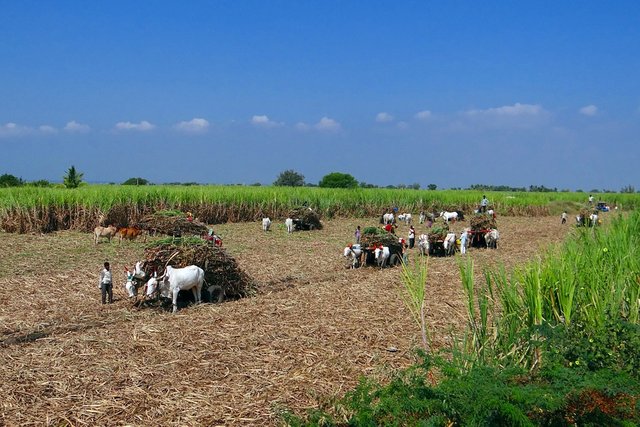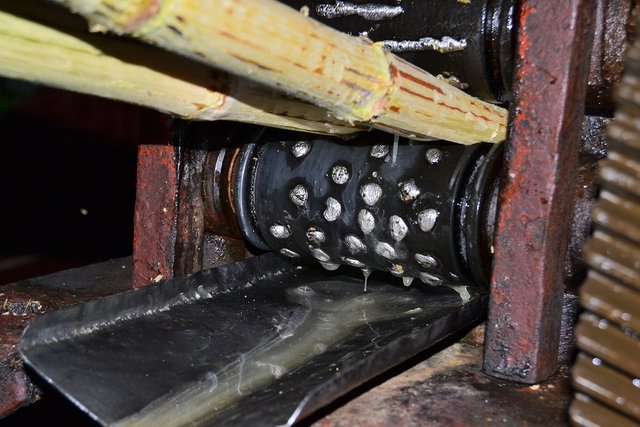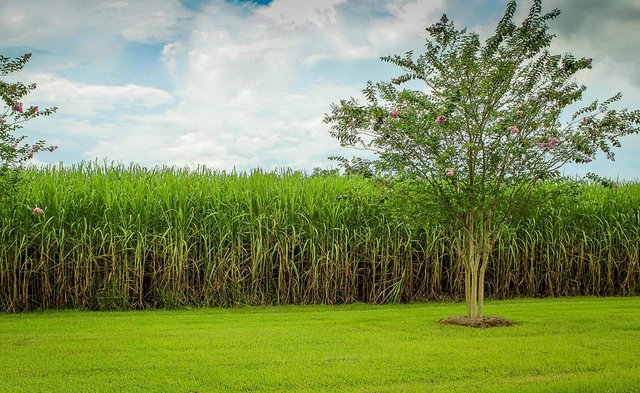Sugarcan's Past— How Sweet Was It?
In 1829, a three-hundred-ton sailboat weighed at anchor from a tiny harbor in the West Indies, pointing south-southeast and sailing into the sea. On board were their commander, the sailing master, and fifty-five ragged and rugged men of various nations, colors and caste members. Sixteen short iron cannons, twenty-four pound cannonballs, hand grenades, a load of rum from the West Indies, a mixture of coral and other items, and supplies of provisions and provisions were in their hold. On deck, back and forth, were muskets, ammunition, and cutlasses.
After thirty-six days whipped by Stormwind in the port of Mozambique on the east coast of Africa.
Cuba leaves fourteen larger ships dropping anchor and waiting to be taken.
As she floated deep in the water and her deck was almost constantly flooded by the troubled sea, the returning cargo of the ship became a constant source of concern to the ship's crew. In it we had loaded a cargo - a hundred black men, women and children; naked, all heads shaved, all branded. A pinch of cargo for sugar cane growers in the West Indies whose slaves they would become and whose crops would turn them into sugar; and estimated by the shipowners and their proceeds from the sale of the slaves could well be well over a hundred thousand dollars.
Weigh the spoon in the other's lap, and those aft in the harbor.
The reader must try to visualize a seat of eight hundred people - literally the same number in a very small area only a few feet wide and about the length of a wagon to pack, and the phrase "packed like sardines" is appropriate the slaves were secured on deck.
Eight hundred miserable souls at sea. Cuba. One of the biggest disasters. Smallpox! The word spread terror by the ship's crew when the first victim of the hold was struck down by him. The terrible Scourge raged. Dead after dead man. Four hundred and twenty remains of a cargo of eight hundred. The commander of the ship did not survive.
From the beginning self-interested individuals who saw an opportunity to make a dollar from the demand for sugar jumped on the train. Religious missionaries in Africa put away their clothes and herds and put their hands in the sugar cake. Even the pope, Nicholas V, who saw the proceeds from the sugar trade, gave his blessing to slavery.
Slave ships plowed the water from Africa into the western world in a steady stream that, if it were possible for a ship, to make a permanent furrow as it cuts through the water, a large canyon dug to the seabed from Africa to the sea West Indies alone in a few years. Ships frustrated ships on the open sea to tie up the black skins and stow them in the hold. The need for cannons and short weapons to protect their valuable cargo.

image credit
It must be remembered that greed makes strange bedfellows. It affected white and black people alike. So the slave trader among the Africans was not without success. If the bait was tempting enough, he was black against black, family member against family member, tribe by tribe. Hence the systematic ease with which slavers could buy their living goods. The black women would sell their own slaves, a loot of tribal warfare, for a new chain of coral beads. A warrior would fight harder to become the victor in the fight he might have conquered to sell for a barrel of rum. By the black man who accepted her in exchange for his black brothers, in this way the greed of all things.
Just how many Africans survived the passage from one continent to the other to put their backs and brawn in the sugar rush is not known. One modern demographer has estimated a conservative figure of fifteen million. Said one British historian: “It will be no exaggeration to put the tale and toll of the Slave Trade at 20 million Africans, of which two thirds are to be charged against sugar.”
Dear reader, can you comprehend this: to be uprooted from your land, what’s more—your continent—and be transported across open seas that took months to navigate, and when landed, to be placed in cages and sold at public auction, each family member individually, many never to see one another again? Ah, the price of sugar could not be measured in pounds but in lives! As ships plowed the seas, cane growers plowed their lands to make room for more growth and production of this sweet, white gold called sugar.
Although sugarcane was a comparatively new commodity in the Western world up until about the sixteenth century, it was known as far back as the reign of Alexander the Great. Sugarcane was discovered in India in the year 325 BCE by one of his soldiers.
Coming forward to Nero’s time of the first century of the Common Era, a Greek physician may have thought he was the first to discover the fountainhead of sugar. “There is,” he wrote, “a sort of hard honey which is called saccharum (sugar) found upon canes in India. It is grainy like salt and brittle between the teeth, but of sweet taste withal.”
The taste for sugar was catching on. Sugarcane was being uprooted and transplanted from the Far East to Europe. The Arabs brought it with them to Egypt, Persia and into Spain when they conquered that country in the eighth century. And for the next two hundred years the only sugar raised in Europe was in Spain.
It was from Spain that Christopher Columbus brought cuttings to the western hemisphere on his second voyage, planting them in what is now known as the Dominican Republic in the West Indies. China was not to be denied this sweet luxury and dispatched men to India to learn the mystery of producing sugar from the cane. Years later Marco Polo described China’s sugar mills as one of the great wonders of that country.

image credit
The Crusaders, under the direction of the popes and with their blessing, had tried to secure Jerusalem from the Turks. They returned home with glowing tales of this strange new sweet called sugar. Sugar trade routes between the East and Europe were soon set up. But sugar was expensive and only the rich were able to buy it. As late as 1742 sugar sold for $2.75 (US) per pound in London. When the poor sampled this sweet commodity they too became hooked on it. The rulers of the countries with foresight saw a whole new horizon of revenues coming into their tills. The chant for sugar was beginning to be heard around the world.
Spain and Portugal saw that some countries were growing rich from the sugar trade with India. They too wanted a piece of the action. Straightaway they sent sailing vessels out into the unknown seas to locate a new and quicker route to India. Columbus was one who went, but what he discovered instead was the West Indies. And his mistake paid off handsomely, for here he found the climate and the soil perfect for growing sugarcane.
Next came the Spanish settlers to take the land away from the natives. The natives became their slaves but proved all but worthless for work in the cane fields. So, in 1510, King Ferdinand of Spain gave his consent to transport a large vessel of slaves from Africa. Thus was started the ruthless trafficking in human lives across the seas. It continued for over three hundred years.

image credit
England did not for nothing boast of the greatest fleet sailing the seven seas. And when the precise moment came for her to get into the sugar business and slave running, her mighty fleet arrived in the West Indies and drove the Spaniards out. England was soon to become the center of the sugar industry of the world. “The pleasure, glory, and grandeur of England has been advanced more by sugar than by any other commodity, wool not excepted,” said a knighted Englishman of that era.
England’s view of the slave trade and the incredible pain inflicted on a people may best be summed up by a noted political personality of that nation: “The impossibility of doing without slaves in the West Indies will always prevent the traffic from being dropped. The necessity, the absolute necessity then, of carrying on must, since there is no other, be its excuse.” And ‘carry on’ she did. Sufficient is this observation made public in the eighteenth century when the sugar slavery was at its peak: “No cask of sugar arrives in Europe to which blood is not sticking.”
The English obviously struck a deal with their African accomplices for a reduced rate on a per-volume purchase. Hence this boast from a British lord: “As to the supply of negroes, we have such a decided superiority in the African trade that it is allowed we have slaves one sixth cheaper.”
Since it was obvious to all that sugar was no longer a passing craze but was here to stay and that slaves from Africa were the absolute, needed essential to keep the industry alive, the paramount question that exercised the minds of all concerned was, how long will the flow of slaves last before running out? The answer was not long in coming. From the pen of an African Gold Coast governor the words came back: “Africa not only can continue supplying the West Indies in the quantities she has hitherto, but, if necessity required it, could spare thousands, nay, millions more.”
However, this was not to be. Already there were at work forces that bitterly opposed the inhuman traffic of black humans, and voices of protest were being heard around the world. Every means possible was being used to get their message across and to stamp out slavery. Notice, for example, this circulated advertisement: “B. Henderson China Warehouse—Rye Lane Peckham, Respectfully informs the Friends of Africa that she has on sale an Assortment of Sugar Basins [bowls] labelled in Gold Letters: East India Sugar Not Made by Slaves.” And then it said: “A family that uses five pounds of sugar per week will, by using East India instead of West India for 21 months, prevent the Slavery or Murder of one Fellow Creature. Eight such families in 19 1⁄2 years will prevent the slavery or murder of 100.”
In course of time one country after another enacted new laws that prohibited slave trade. The United States, however, who had heretofore purchased her sugar from her southern neighbor Cuba, threw herself into the sugar and slave business, and the southern state Louisiana, with her newly developed sugar plantations, became the focal point. Any slaves that she could not use, the cotton plantations of the South could.
For over three centuries King Sugar had reigned supreme in the world, exacting a tribute that staggers the imagination. No commodity on the face of the earth has been wrested from the soil or the seas, from the skies or from the bowels of the earth with such misery and human blood as has sugar. Today, ah, how sweet it is! Yesterday it was as bitter as gall.
